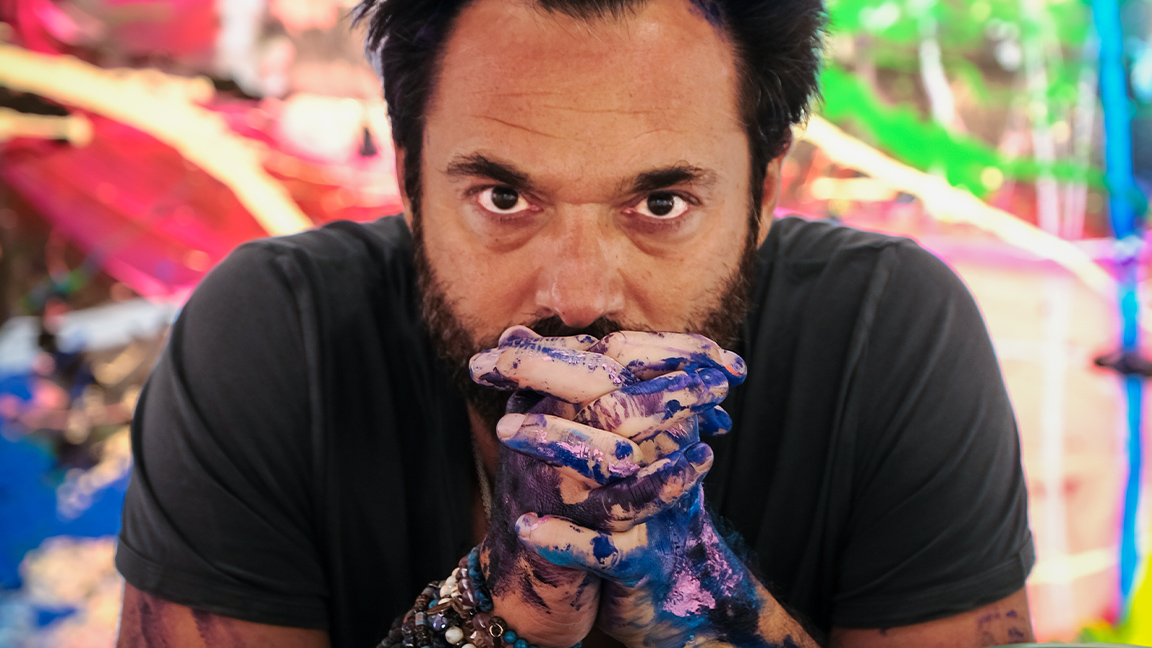
Sacha Jafri is one of the world's most successful living artists who is on record as creating the world's largest painting on canvas, Journey of Humanity, that sold for $62 million in 2021, the third highest sum for a living artist. He's also someone who's approach to art puts him at odds with the idea of digital art and the use of technology in art. Core to this is his aversion to the rising use of AI in art.
"I'm sort of against digital art," he tells me hesitantly, feeling his way around the words, as generative AI is becoming synonymous with the broader creation of digital painting. Sacha clarifies, "I'm against technology driven art. There's a problem with AI, there's a big problem with generative art and AI driven art."
More secure in his view, Sacha explains: "I think the reason why is because the next generation is so obsessed with the digital world. They're so very into AI, the metaverse, but particularly the digital world to the point where they would rather escape to the digital world than actually connect with the world around them. And that's very dangerous for mental health reasons, for the progression of humanity, for the understanding of compassion, empathy, love, connection, all these things. It's very dangerous."

To understand Sacha's views on digital art, or more particularly "technology driven art" and AI, you have to appreciate how and why he creates art. The Dubai-based painter creates his huge works of art from a meditative state, when his brain waves are in theta.
Painting from a trance Sacha says he's unaware of his surroundings. "You could punch me in the face when I'm painting and I wouldn't be aware of it," he laughs. In this moment he says he us able to open himself to pure emotion, to the "trillions of emotions" humans can feel and that is then put onto the canvas.
I try to focus on purifying my energy so that I can emit this energy that can actually connect with people on a higher level
Sacha begins a creating by visualising an emotion, painting a sphere of colour and some intuitive marks, revolving and building in layers. He doesn't try and control the flow of the colour, lines or layers but lets the emotion guide him. What first looks abstract on closer view forms a narrative. What Sacha is doing is trying to visualise an evolving, singular emotion, and these complex layers of colour and form build into narratives.
"So I believe we're made of energy," he tells me, explaining: "Our energy that we emit is made of our intentions, and when our intentions become questionable, when our intentions become agenda filled, financially driven, socially driven, ego driven, we emit static, and energy and can't transmit through static, hence the breakdown of humanity."
In simple terms, he says, "I try to focus on purifying my energy so that I can emit this energy that can actually connect with people on a higher level. When I combine that with paint, I am laying paint with pure intention, which allows the paint to vibrate at a higher frequency, which then connects with the human soul. And I think that's what painting is all about."
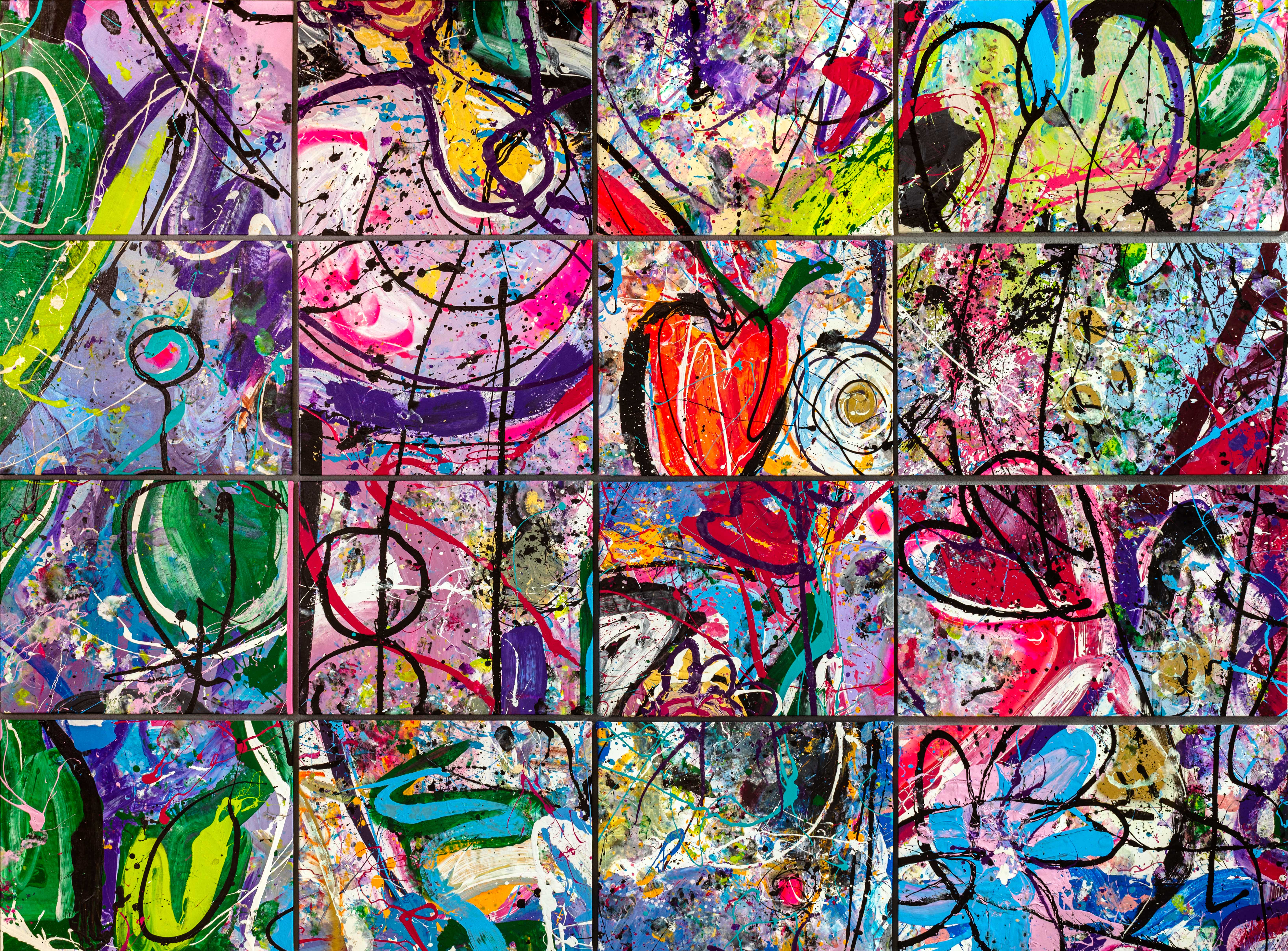
Sacha uses painting as a means of understanding and connecting with the world, including controlling is own struggle with dyslexia and autism. Because his art comes from a physical relationship with the creation process, I can see why Sacha is wary of digital art. The extra layer of technology between himself, the paint and the canvas is could be a hinderance.
When you've just got canvas and paint, and you purify your intentions and you release pure energy and you connect with your emotions, it's incredibly therapeutic
Sacha Jafri
As we talk, he opens up and reveals he doesn't paint because he loves it but through necessity. As a child he couldn't make sense of the world due to his dyslexia and a need to constantly draw and paint eases the anxiety.
"The world just didn't make sense. People didn't make sense. I couldn't really communicate with people. I didn't really understand the world I was in and the only time I did was when I was painting," he says, revealing a little more about why he needs to create art. "That's when I could sort of make sense of things because it's a medium that I understand. I understand how it is laid, I understand how it connects, I understand how different colours and marks connect. I understand how shape, colour mark and form can evolve. I understand how it vibrates without really thinking about it."
Sacha only feels comfortable when painting and needs to paint regularly or he becomes frustrated with the world. His approach to art is therapeutic, and the artist likes to work with childrens' mental health charities to show how his instinctive approach to painting can help others.
"Because it's a beautiful language that when used correctly is incredibly pure," he says. "When you've just got canvas and paint, and you purify your intentions and you release pure energy and you connect with your emotions, and the emotions around you, it's incredibly therapeutic."
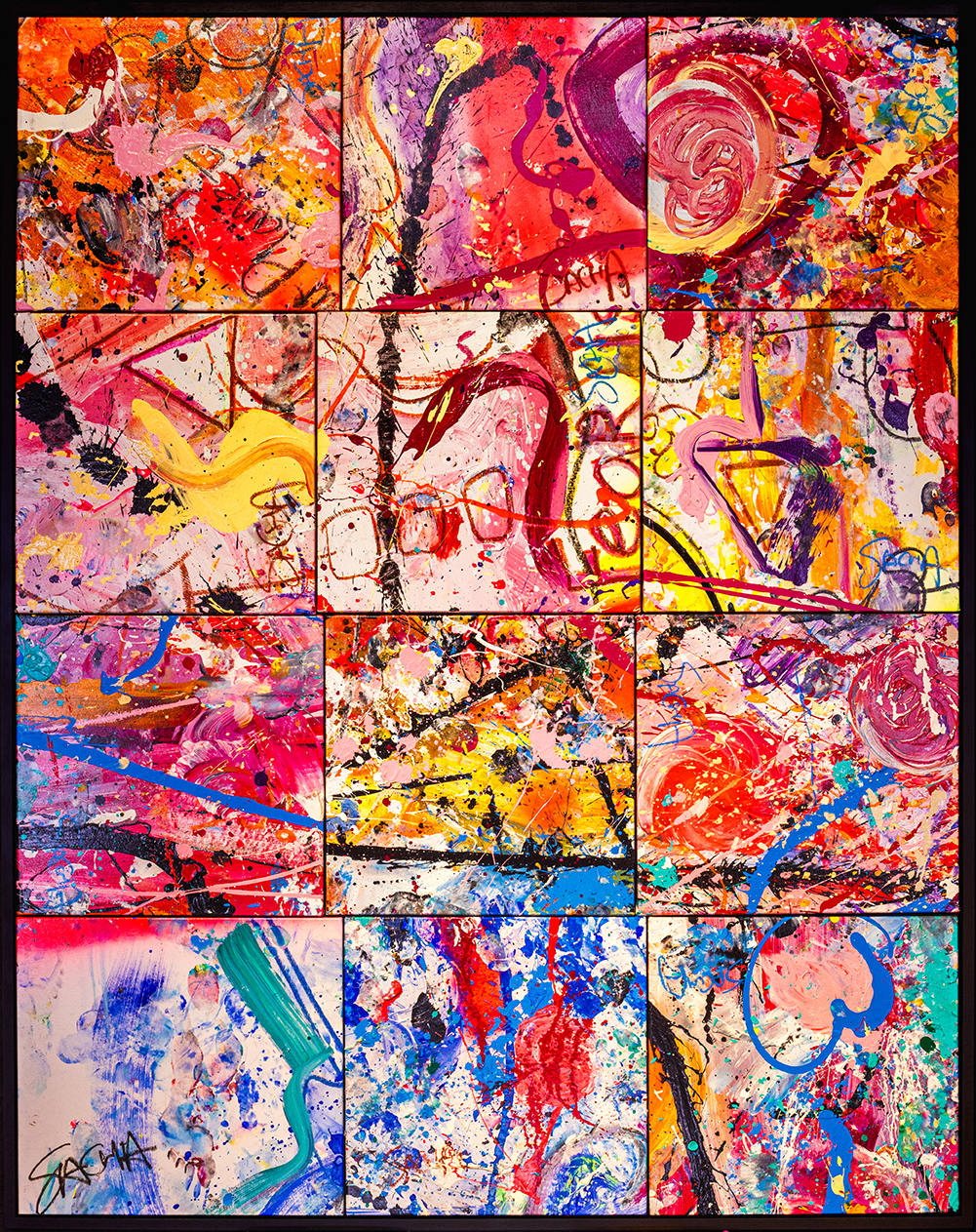
And so we come back to Sacha's views on digital art, which are more nuanced than at first glance. His hesitation to embrace digital painting and technology comes from a place of concern for people forgetting to look and exist in the moment. He refers to his young child's generation, today's six to ten year olds, "They sort of lost that understanding of the beauty in what surrounds them, the natural world, and they've lost that connection to it, and that's why they're so connected to the digital world".
His approach to art comes from an instinctive place of trying to capture emotion and creating paintings that have the ability to move people emotionally, not via an AR hologram leaping from a Vincent van Gough painting or an animated recreation of a Kandinsky.
Sacha tells me he fears a world where art becomes just a little bit less soulful, and generative AI is the biggest threat to the future of art, how people interact and how we understand emotion. "When you look at AI, AI is definitely not art," he states, saying he can see uses for AI in healthcare, marketing, engineering, "but art is the one thing that it is not, art is more than that."
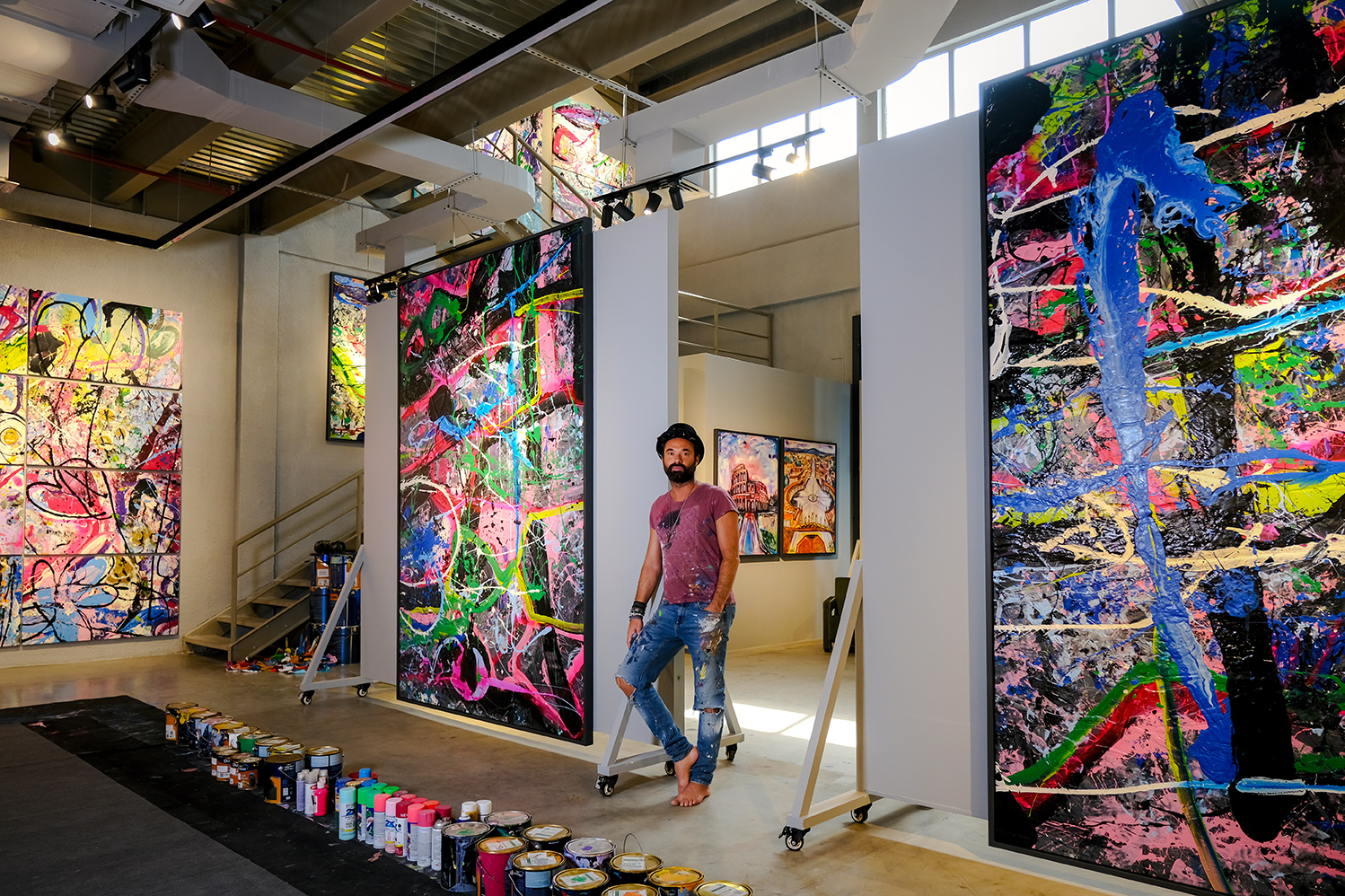
When Sacha, who's natural position is to limit his use of technology, says he can see a purpose for digital art, I sit up and take notice. He's recently been using the new Huawei MatePad Pro 13.2, in fact we first met at the brand's Dubai launch event where I first saw his digital paintings, and is gradually becoming a convert to digital art. But he's using it in a way that fits with his process and his view of art creation, in a way that supports his need to paint to make sense of the world without interfering with the process.
"When you look at how digital can enhance creation, as opposed to drive creation, it becomes interesting," he says. There's a practical side to digital art that Sacha has become enamoured with, as a typical traditional painting he creates includes around 1,000 layers of paint, one on top of another, and each needs to dry before being varnished, before the next layer can be applied. Practically painting in this way takes time and is expensive, but on a tablet he can create "layers and layers and layers" with ease.
"I have to be honest, I was surprised," says Sacha about using the new Huawei tablet. "It felt like I was laying paint. There's no latency, it's an immediate connection, which meant I felt connected to the canvas."
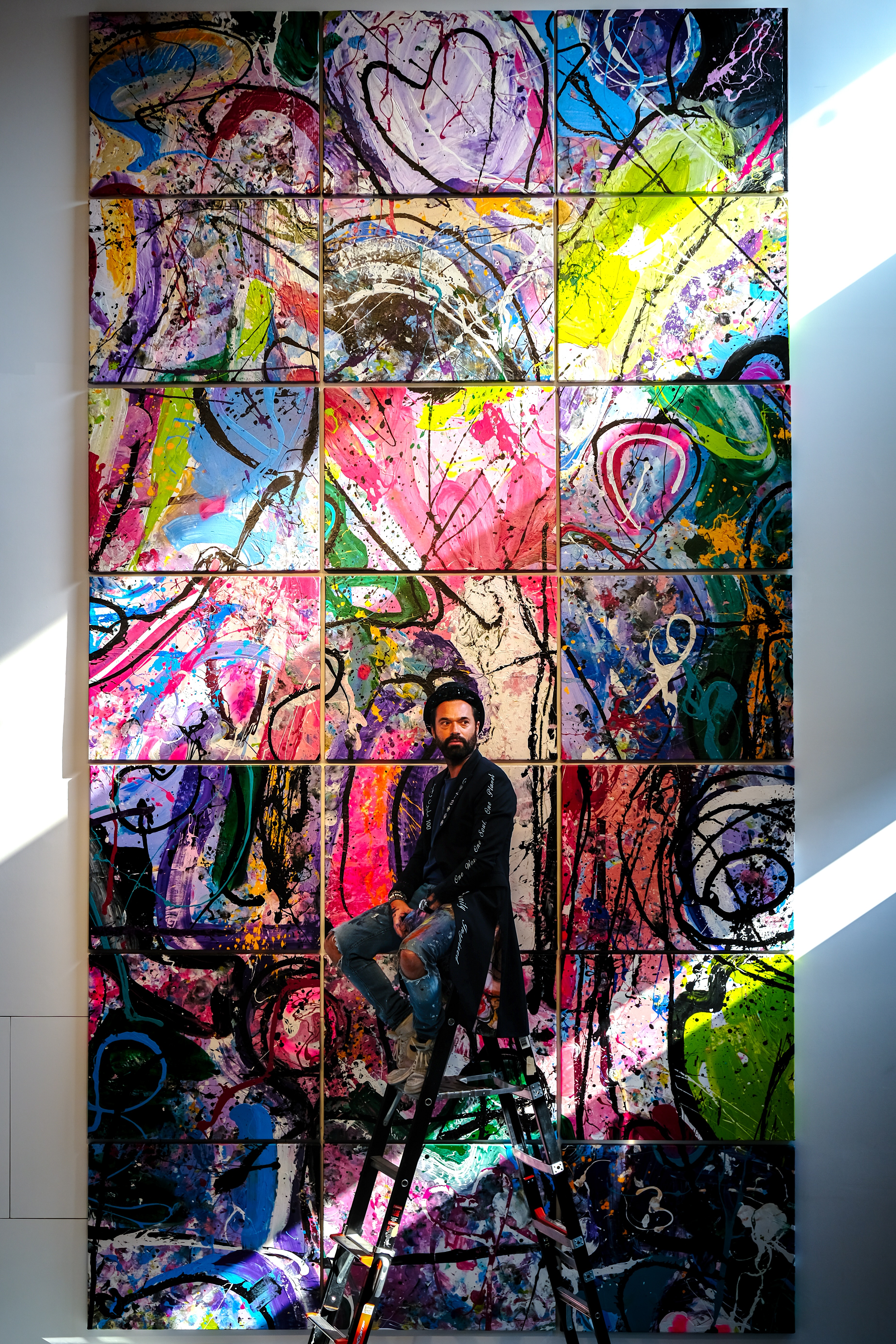
In the past the artist has found it hard to connect with using a tablet for painting, a delay in the stylus making a mark led to a disconnect and never truly replicated the sensation of running a brush across a canvas.
But now, as technology has improved, Sacha says he was "able to do something that I thought was really beautiful, that had many layers in a short space of time, that when put on a big screen evoked an emotion, and I was surprised that was possible, but it was possible, it did happen, and I found it very beautiful and a really good experience".
I found it very beautiful and a really good experience
Sacha Jafri
It's interesting how an artist like Sacha approaches adopting digital processes into how he works, and it calls back to his concerns over not letting the technology dominate the creativity. That's what the threat of generative AI really is about, replacing the human creative process.
"If you go purely digital, I think you're going to miss something," he suggests, explaining how technology can and should work with a traditional workflow. "I think if you are creating physically and painting on canvas, if you are focusing on purifying your intentions, the energy you emit, connecting with human beings, emotion, and then every now and then you move into a digital creation, that's great, and you can do really cool things with it. But I think it's important to have the two working side by side."
Find out more about Sacha Jafri at his new website or follow him on Instagram. If you're interested in digital art, read my guide to the best drawing tablets.







